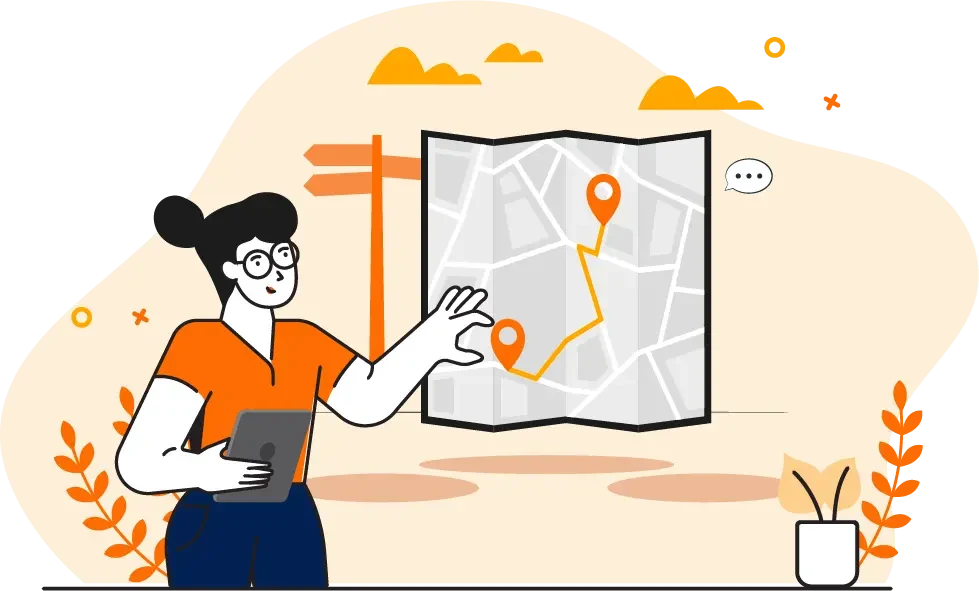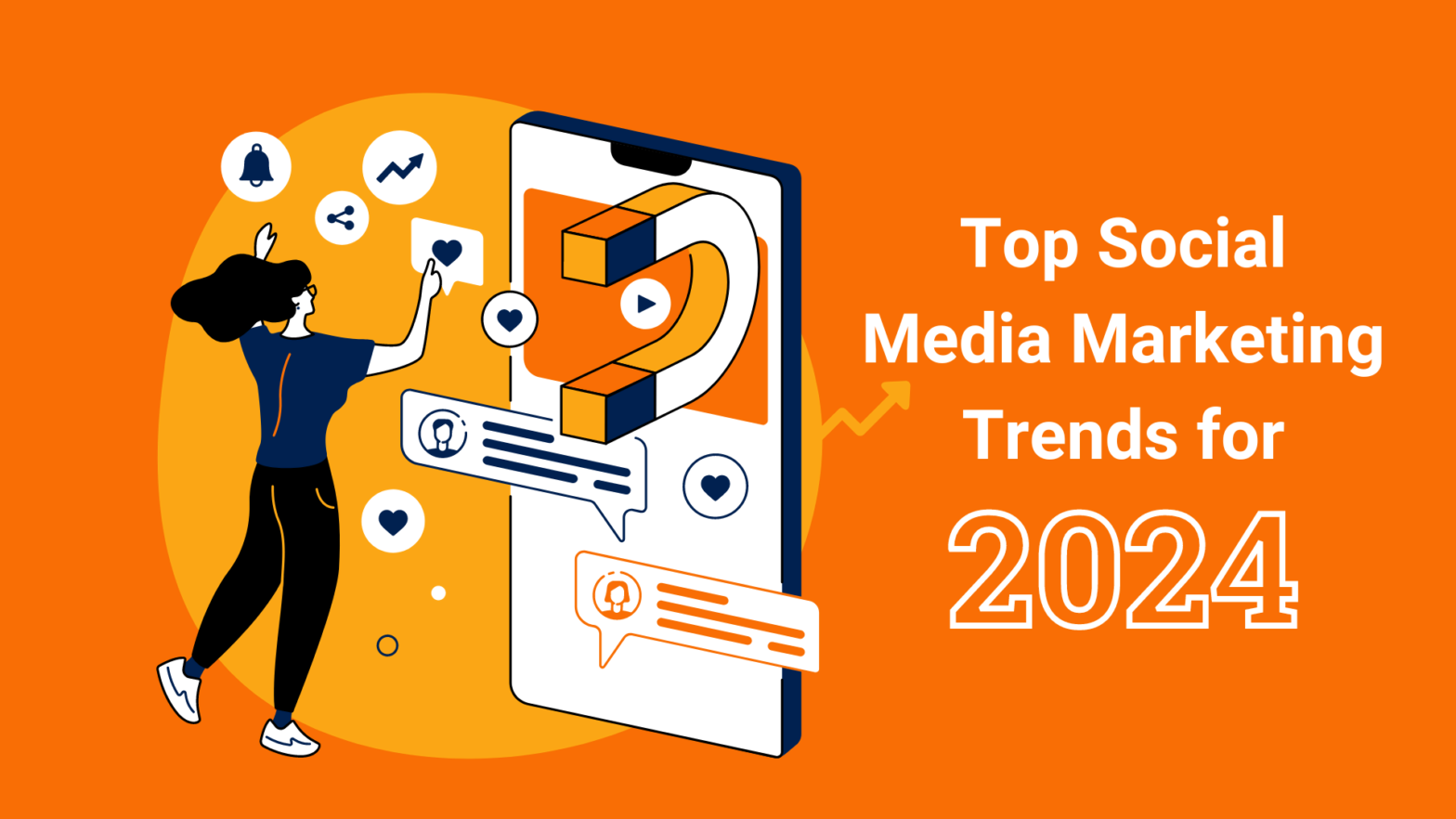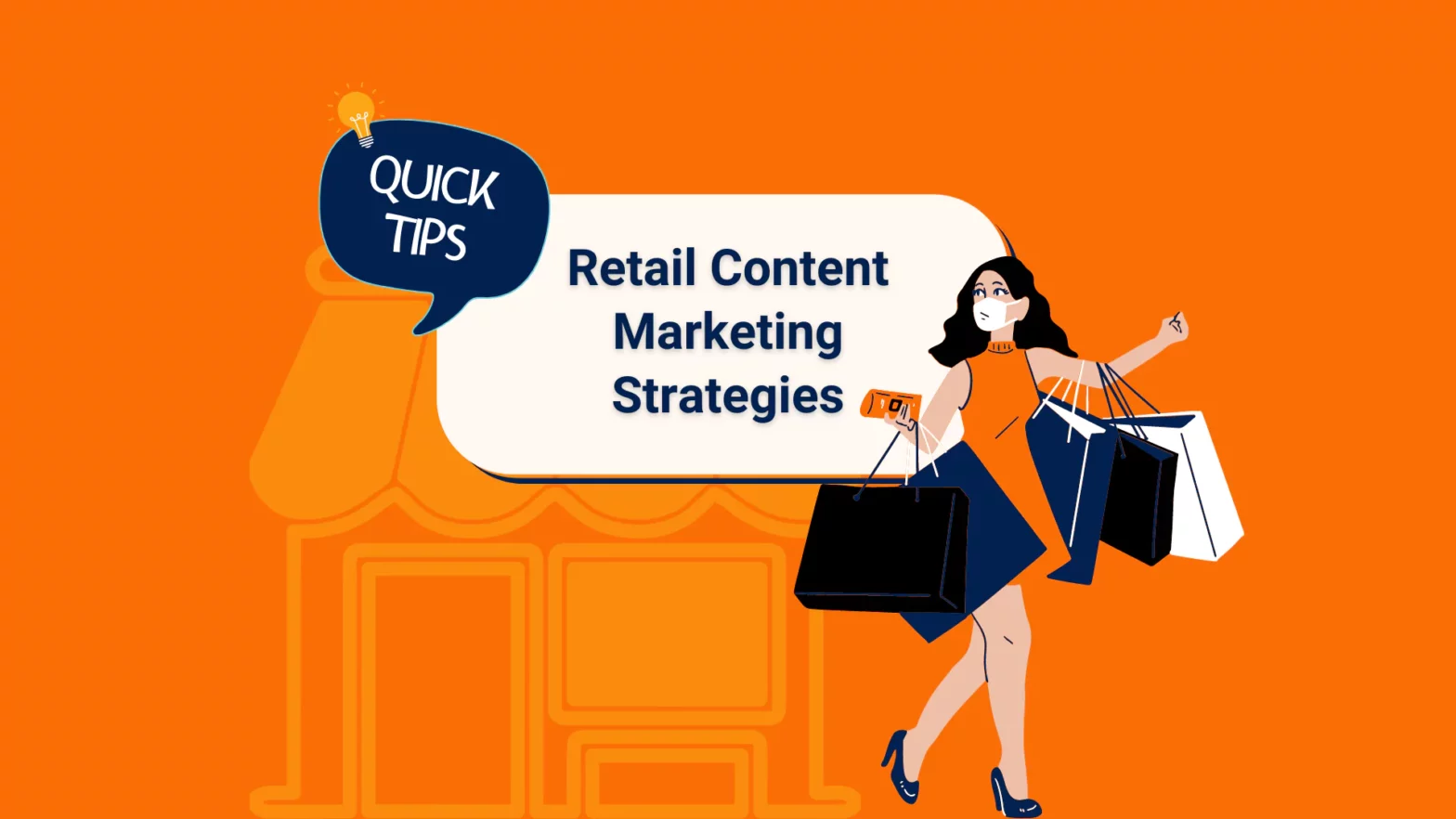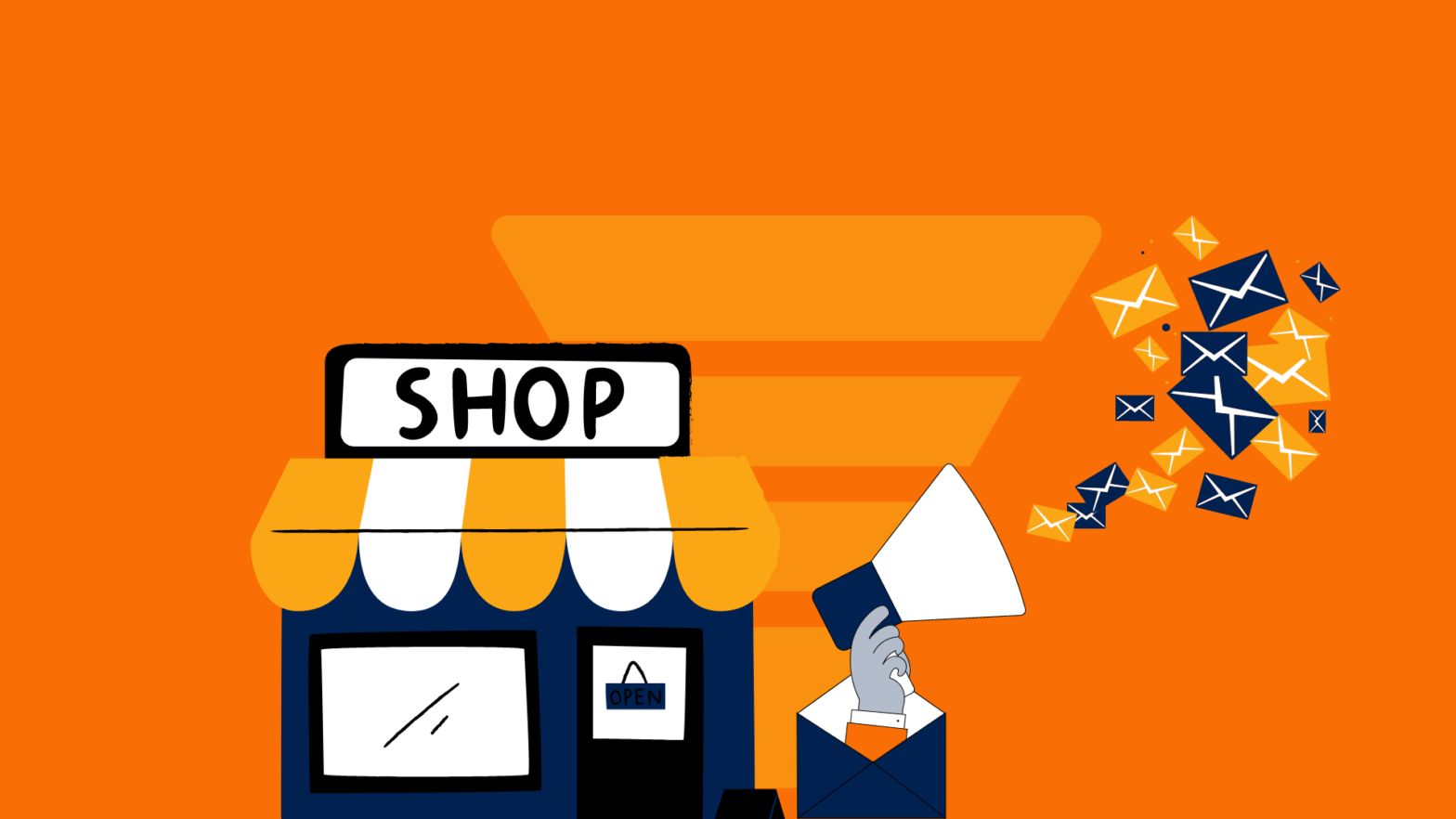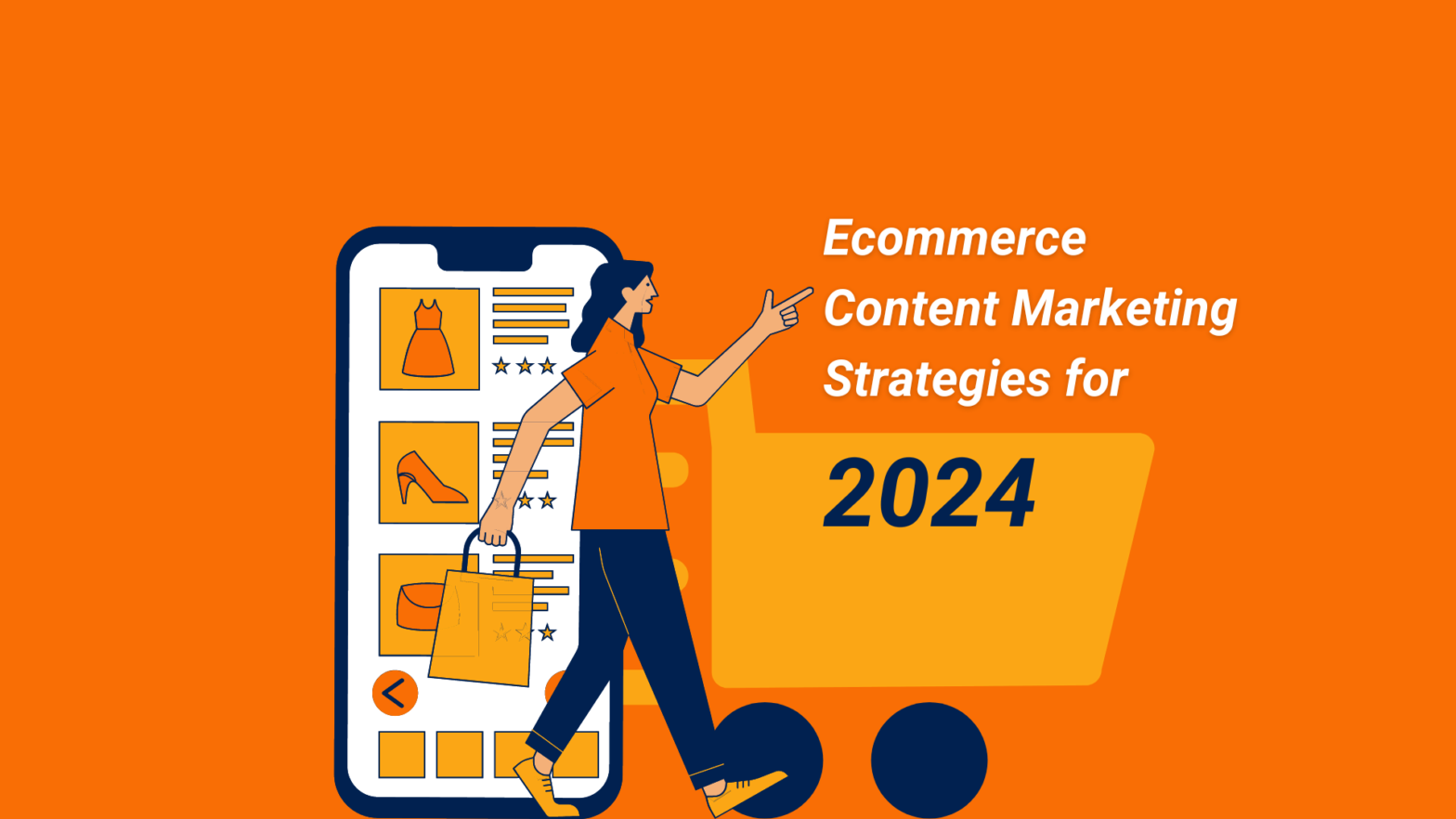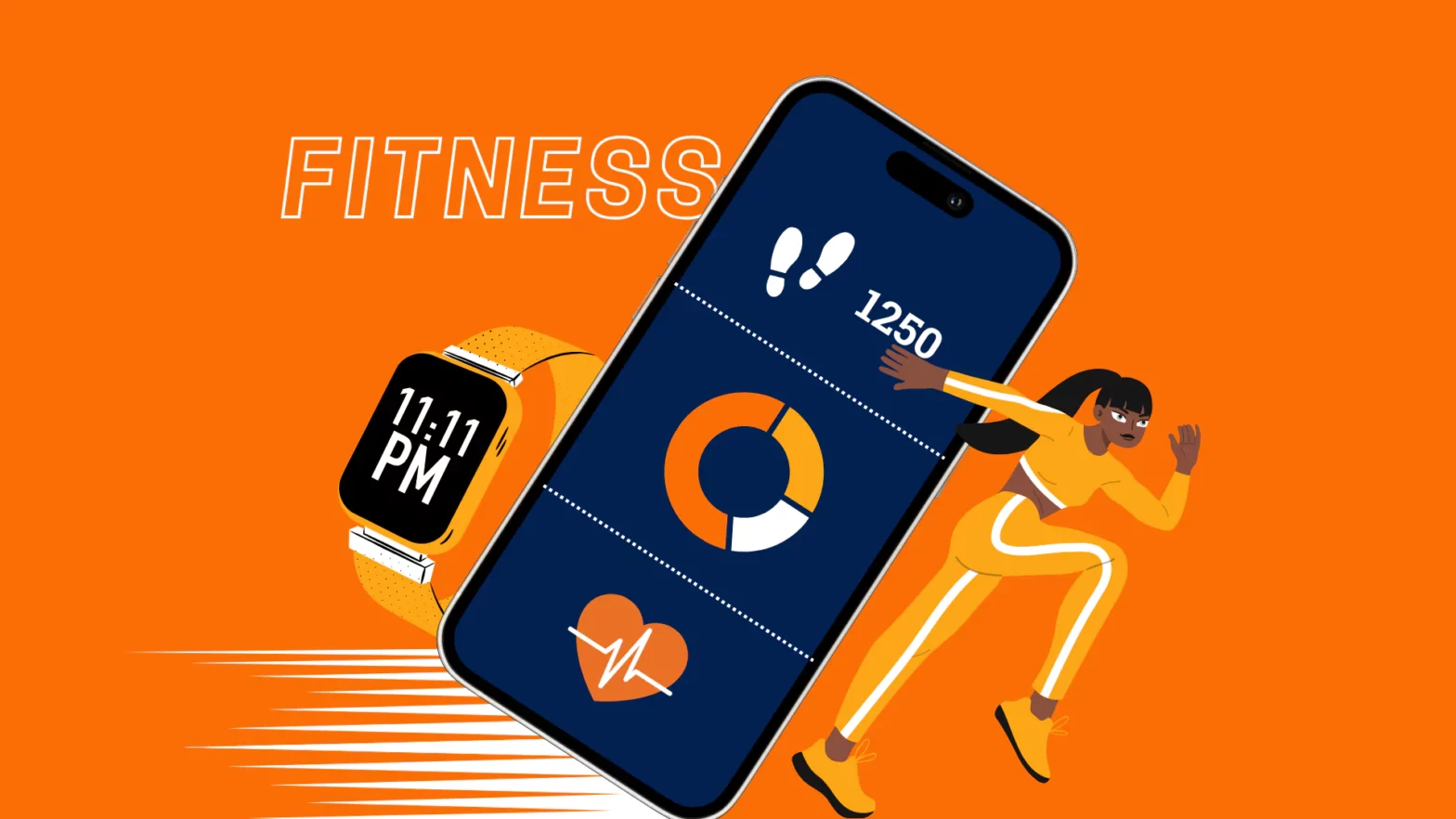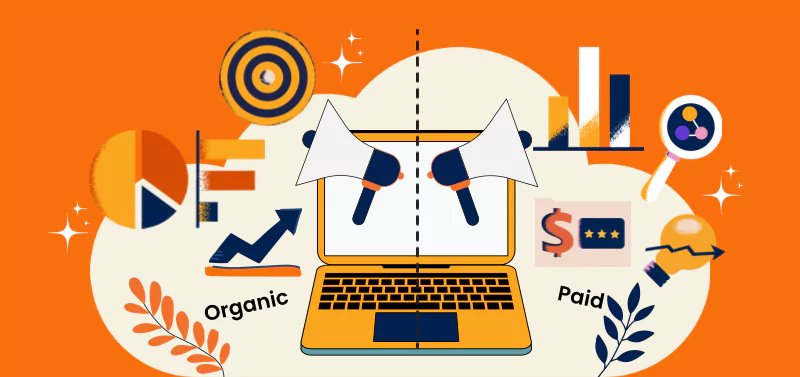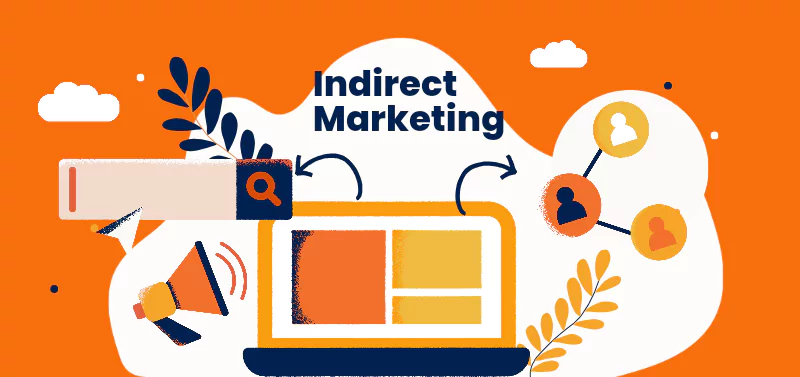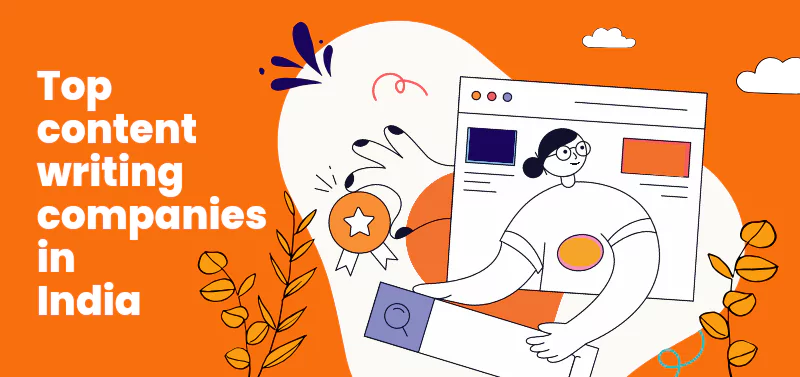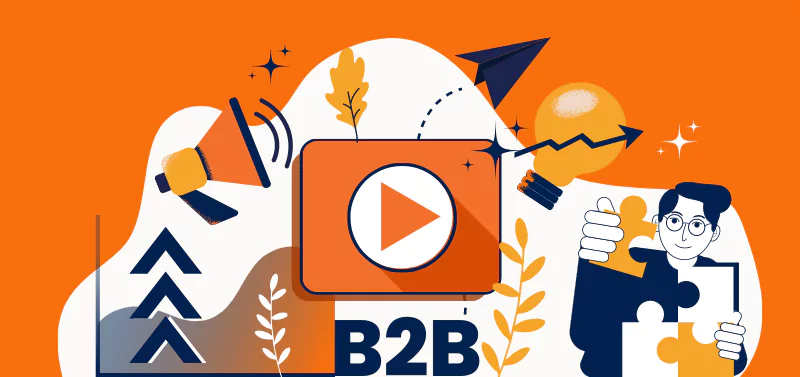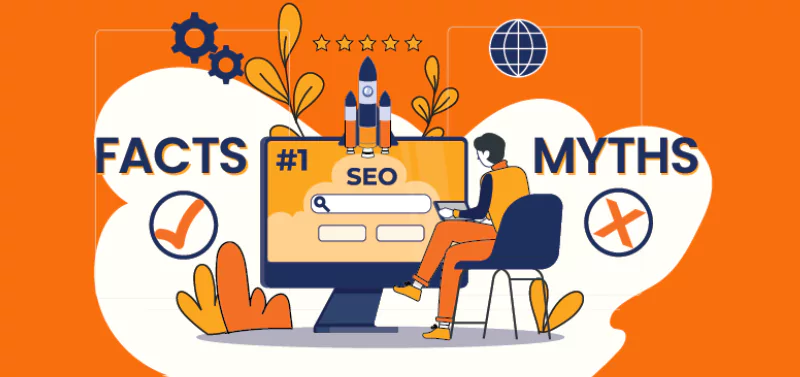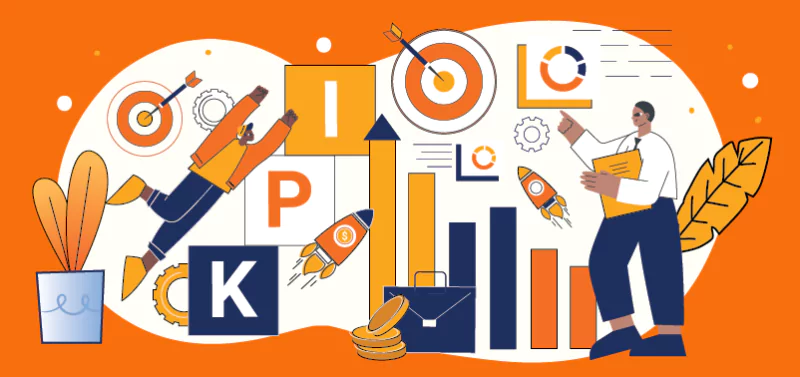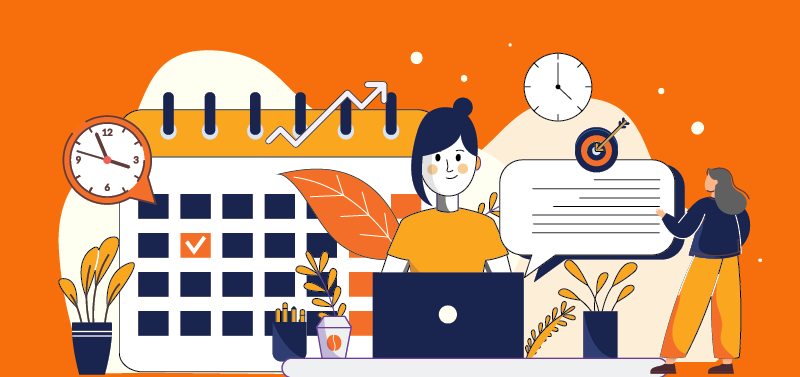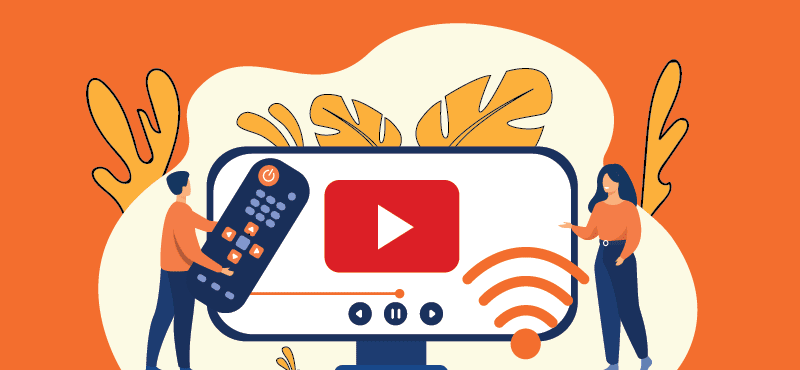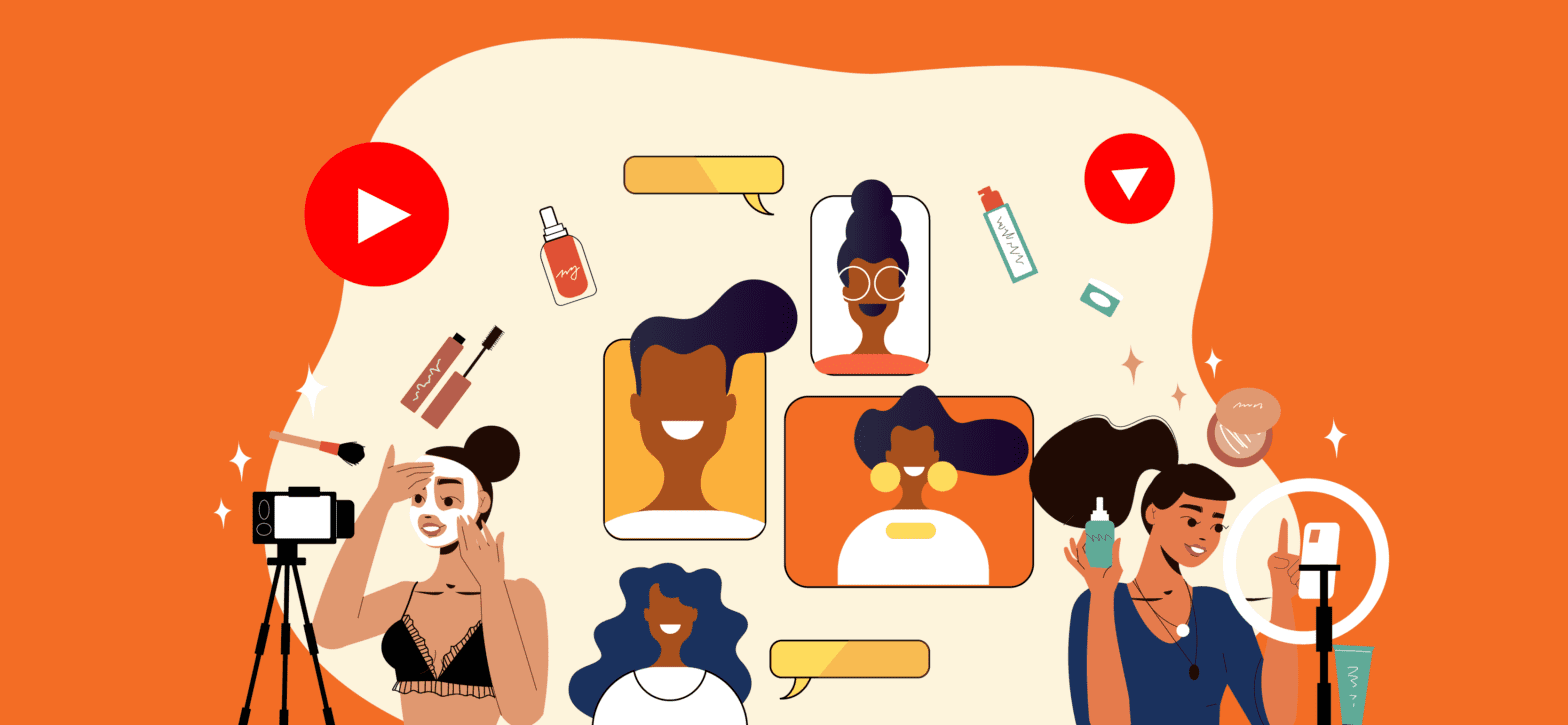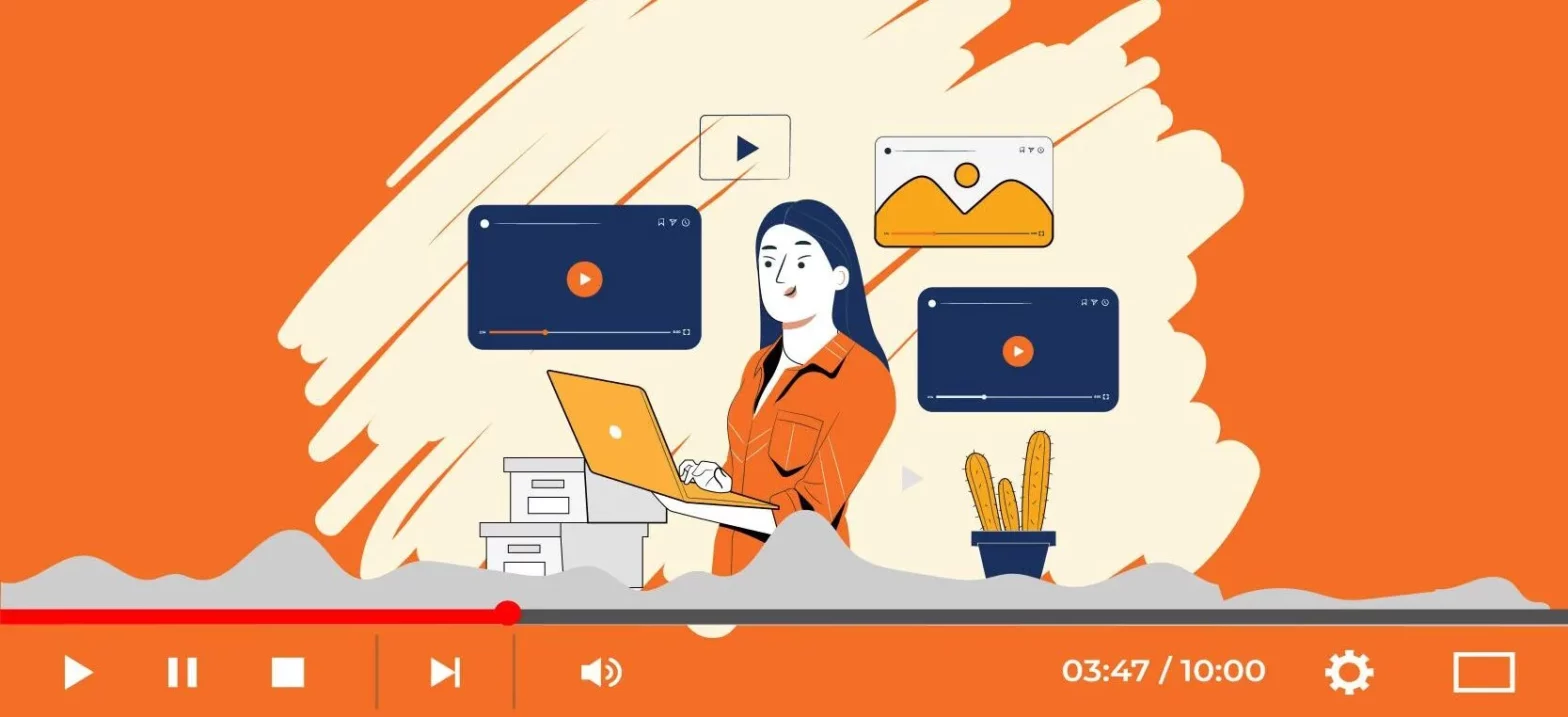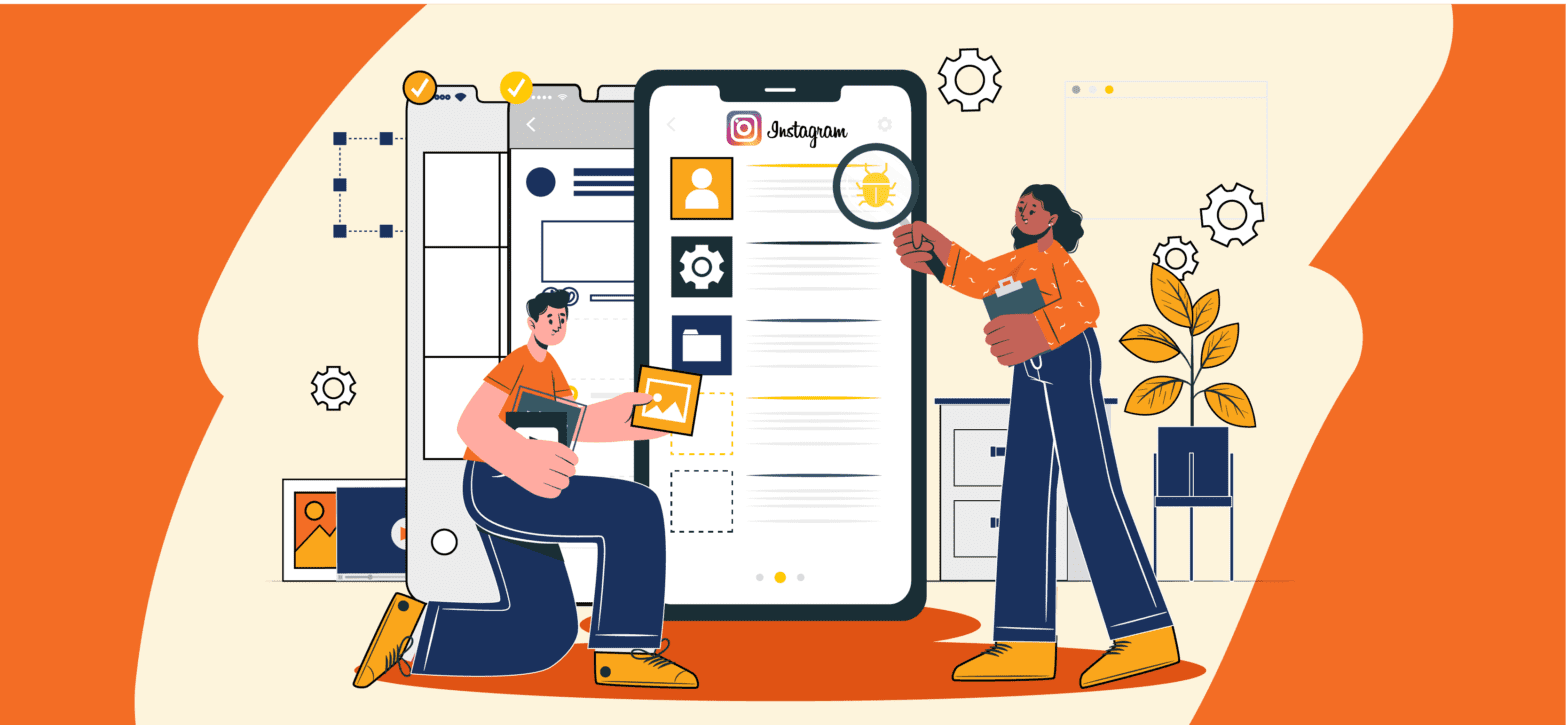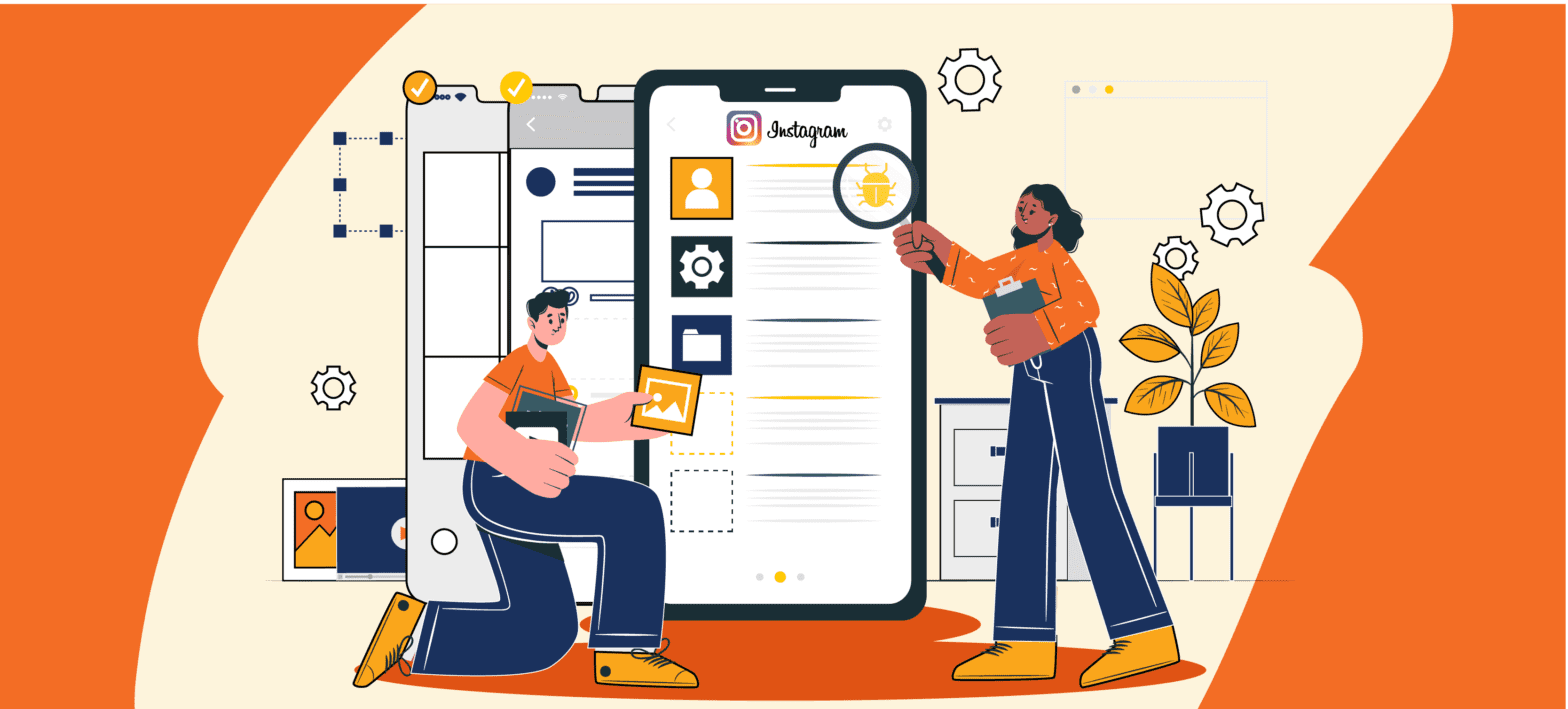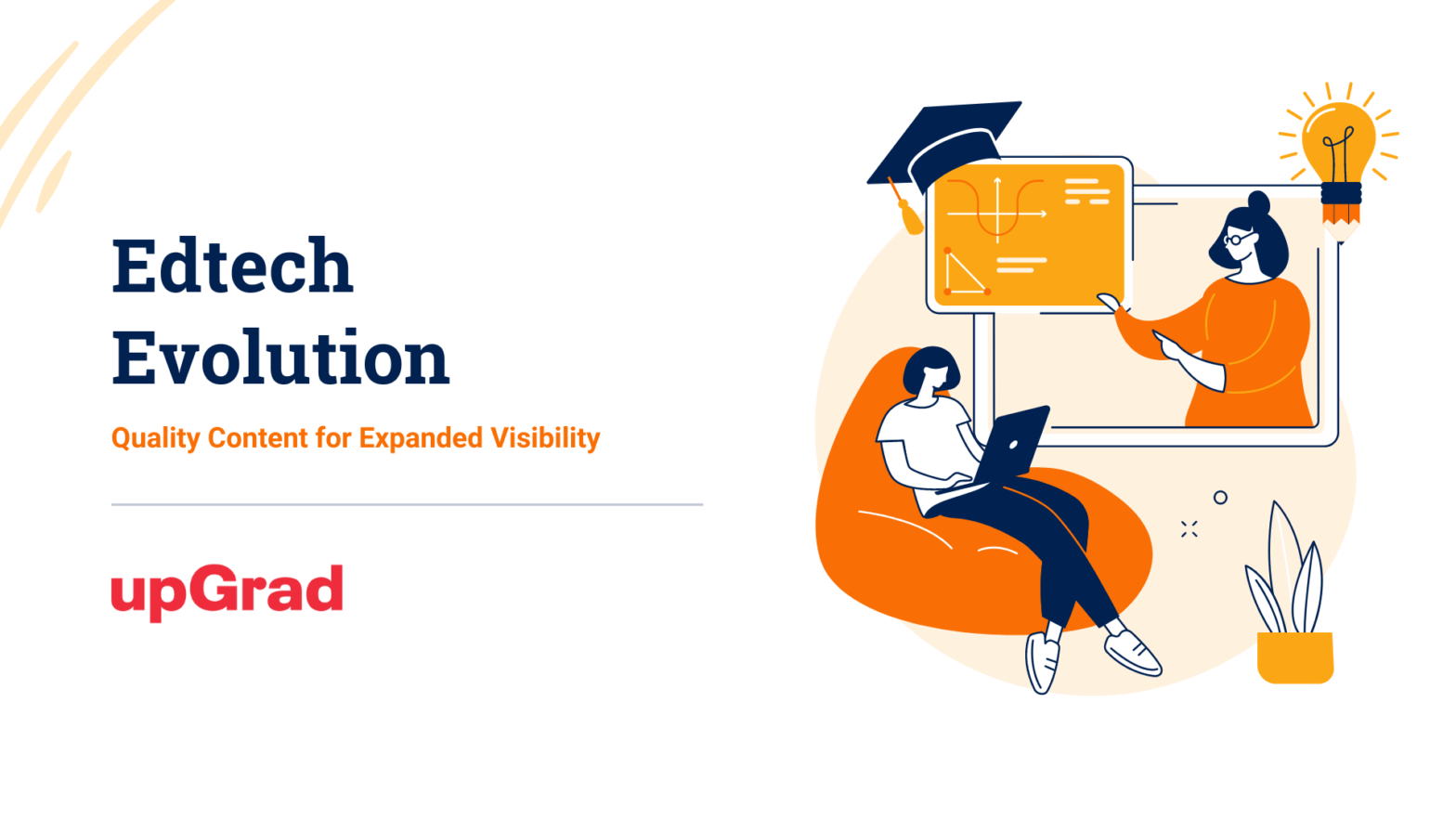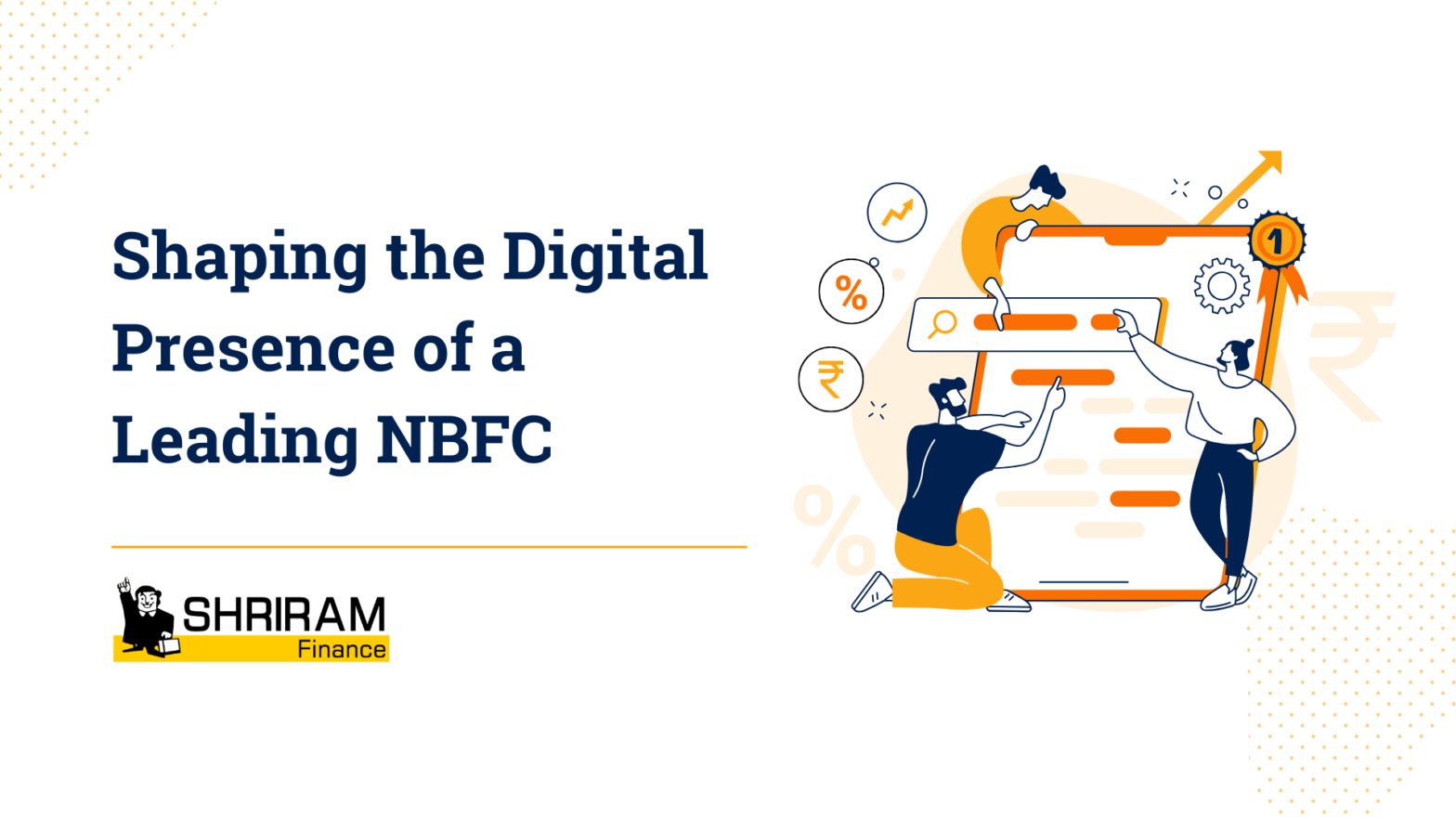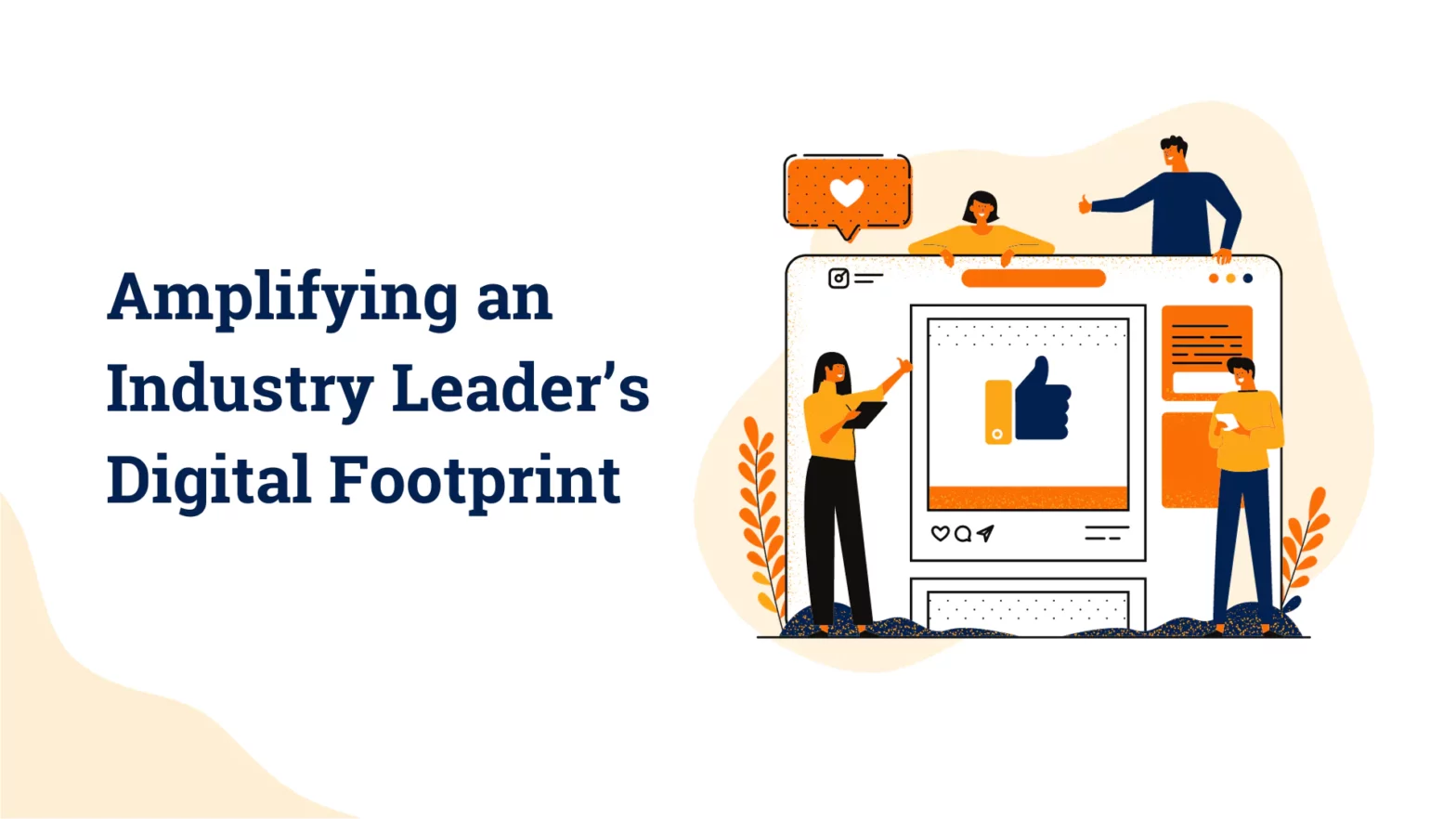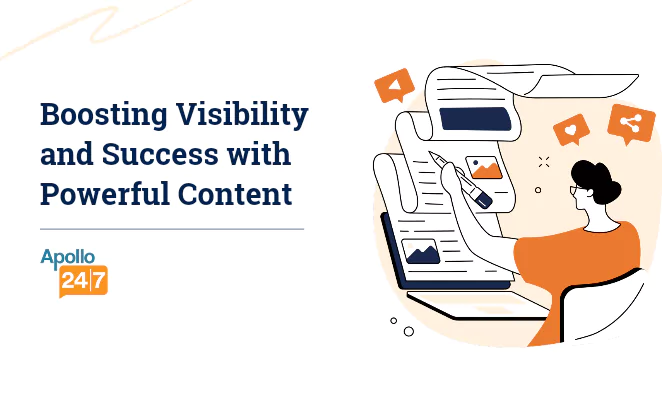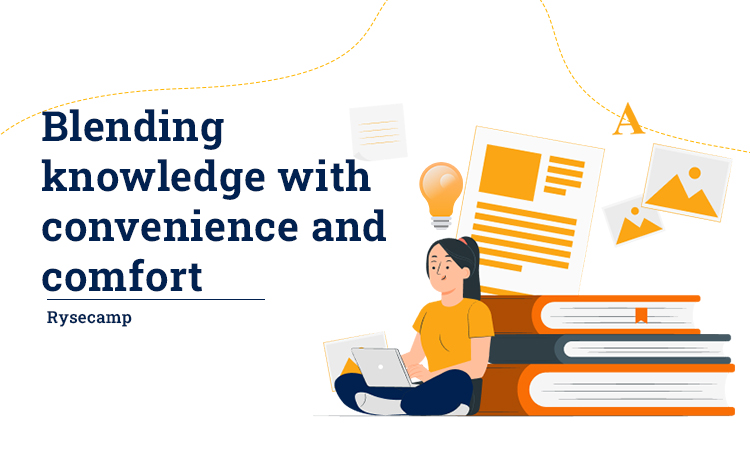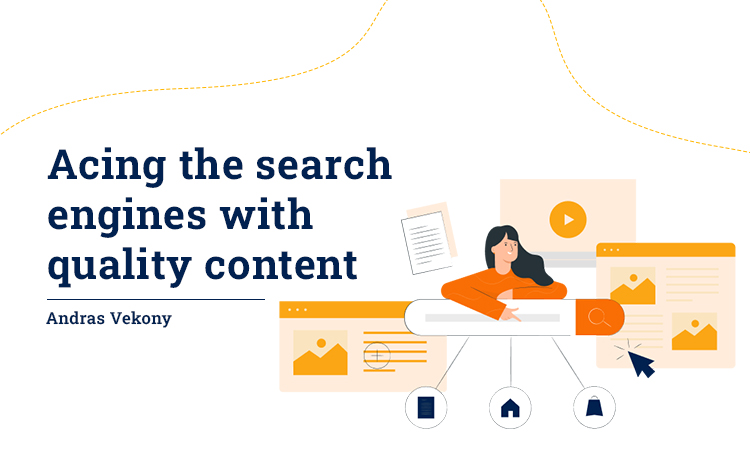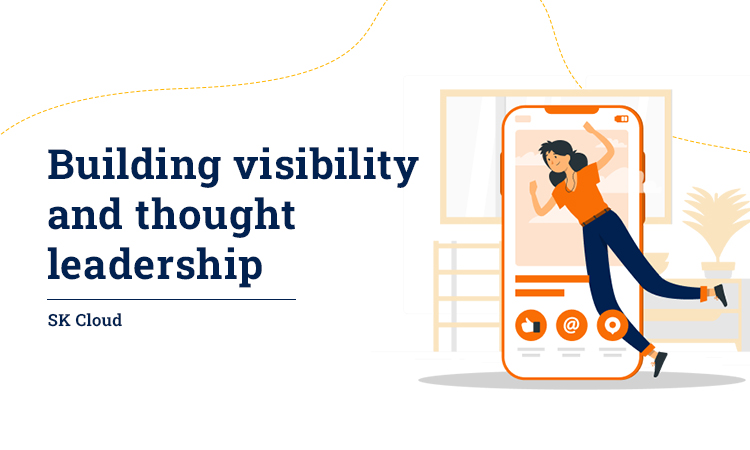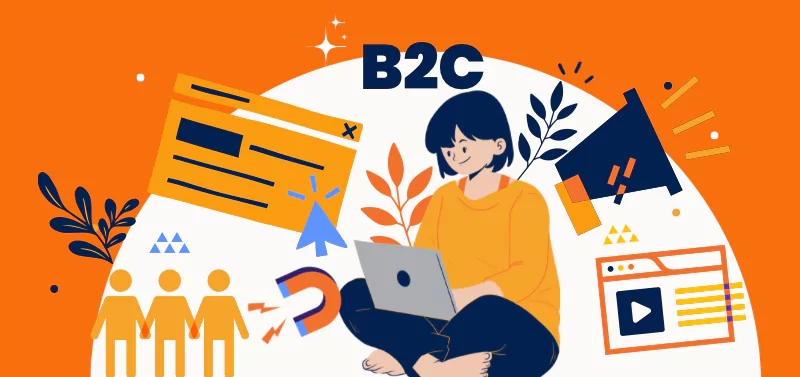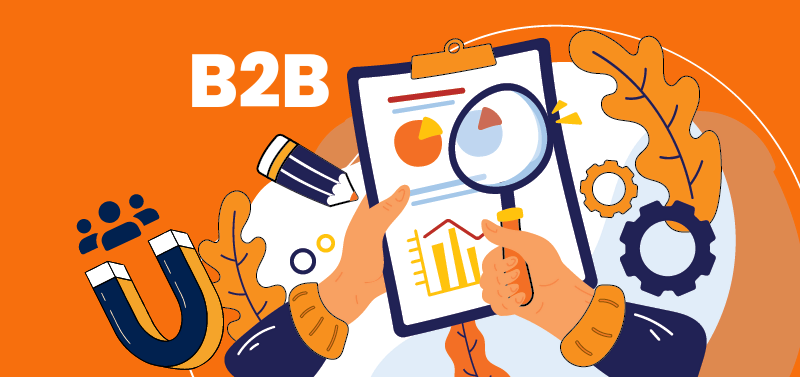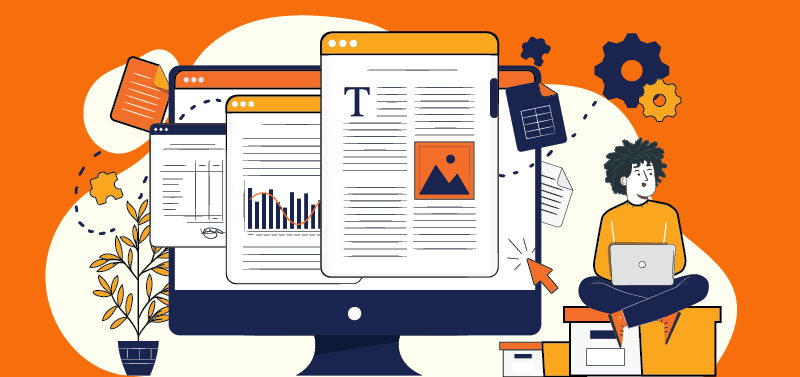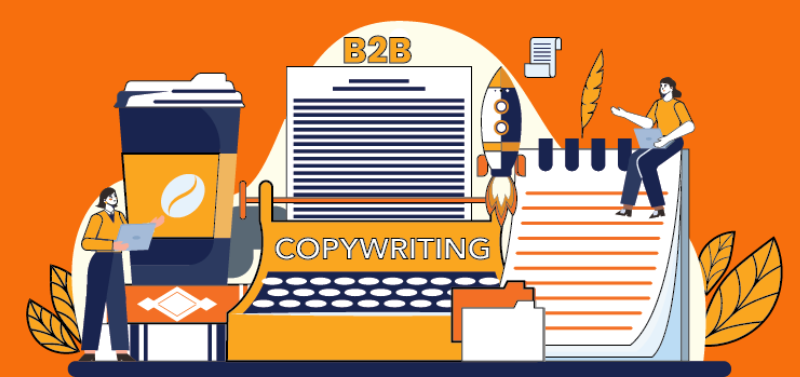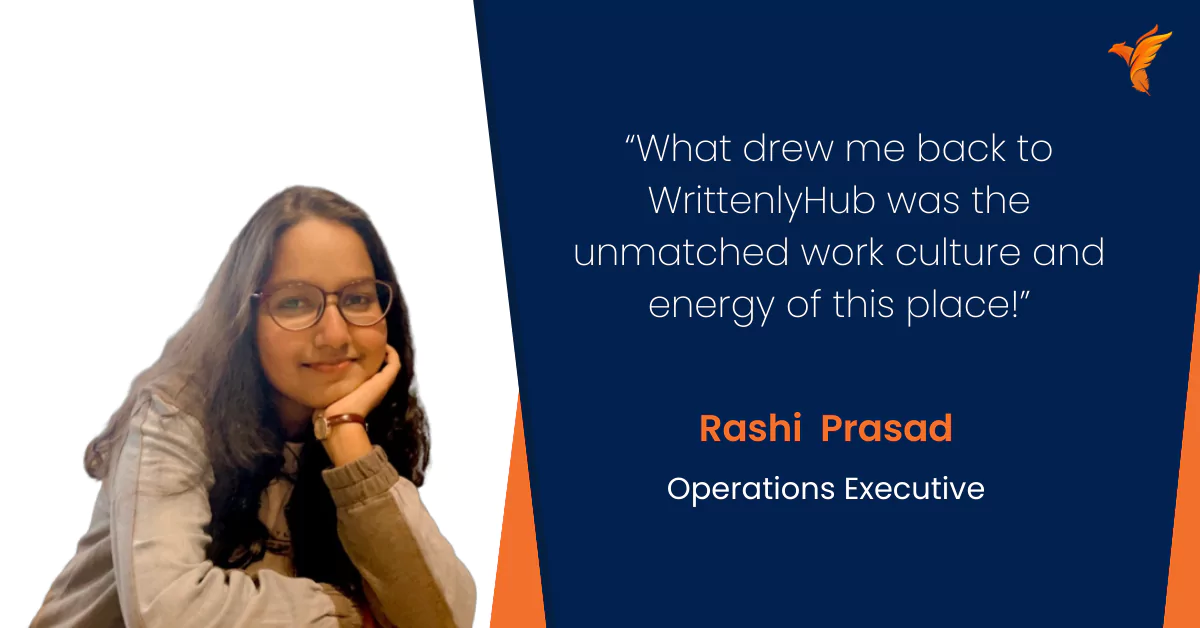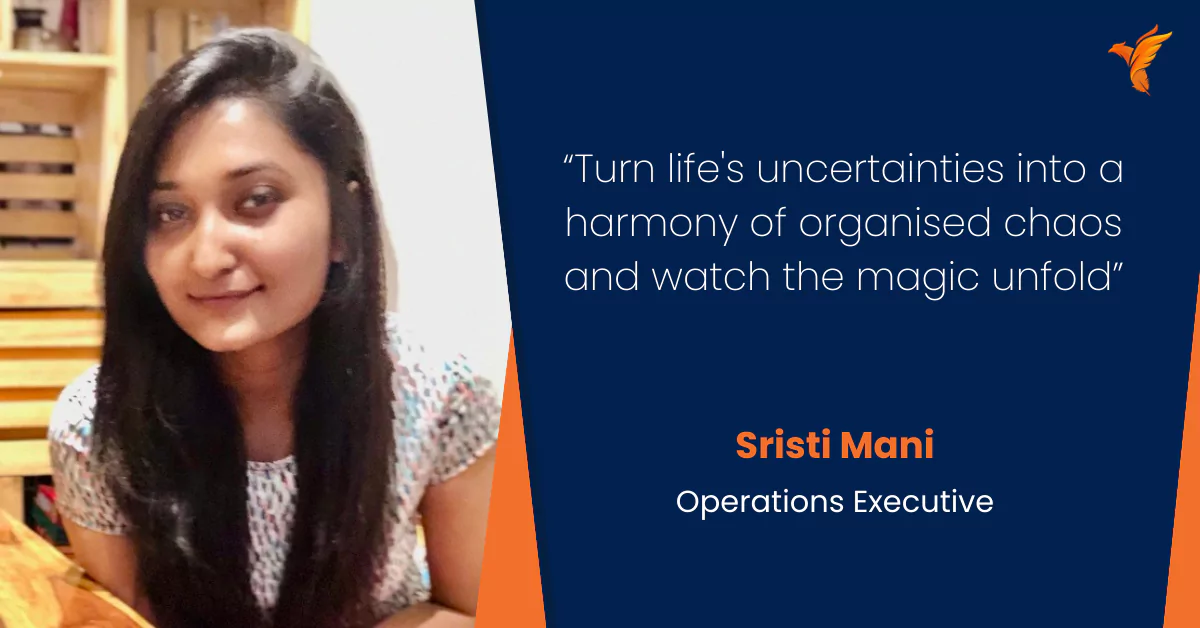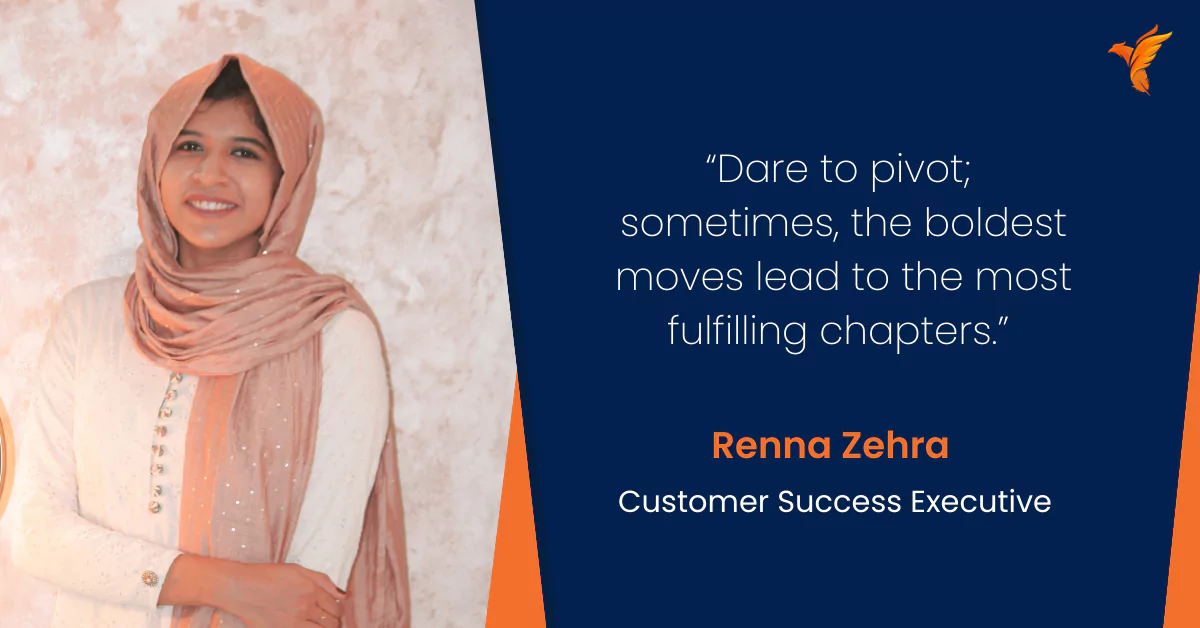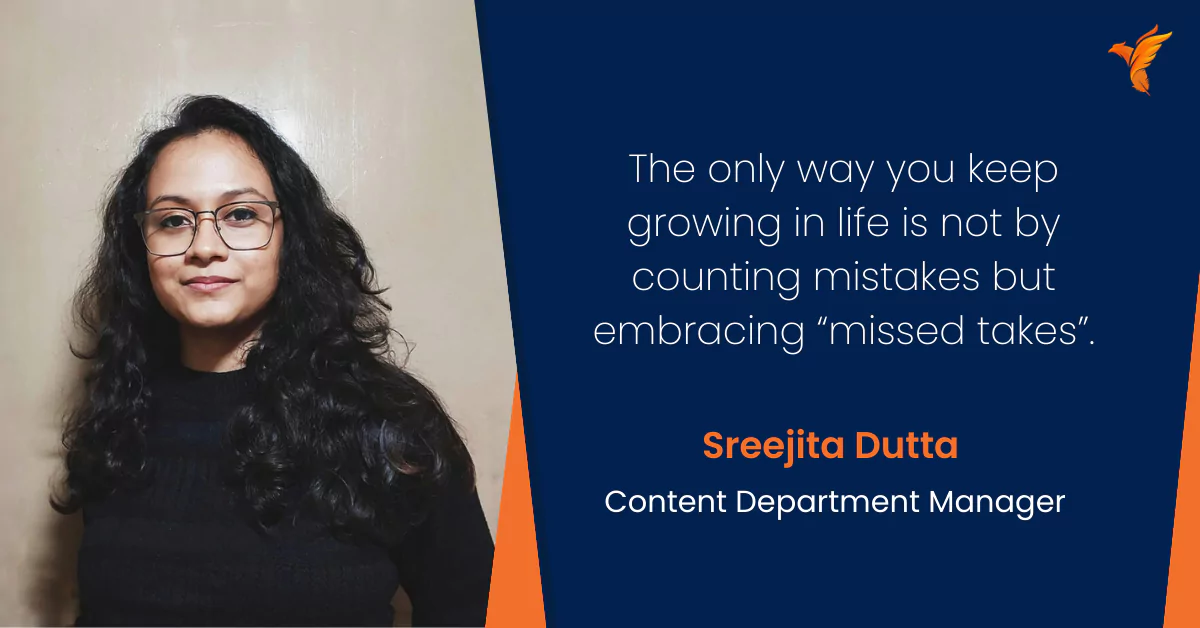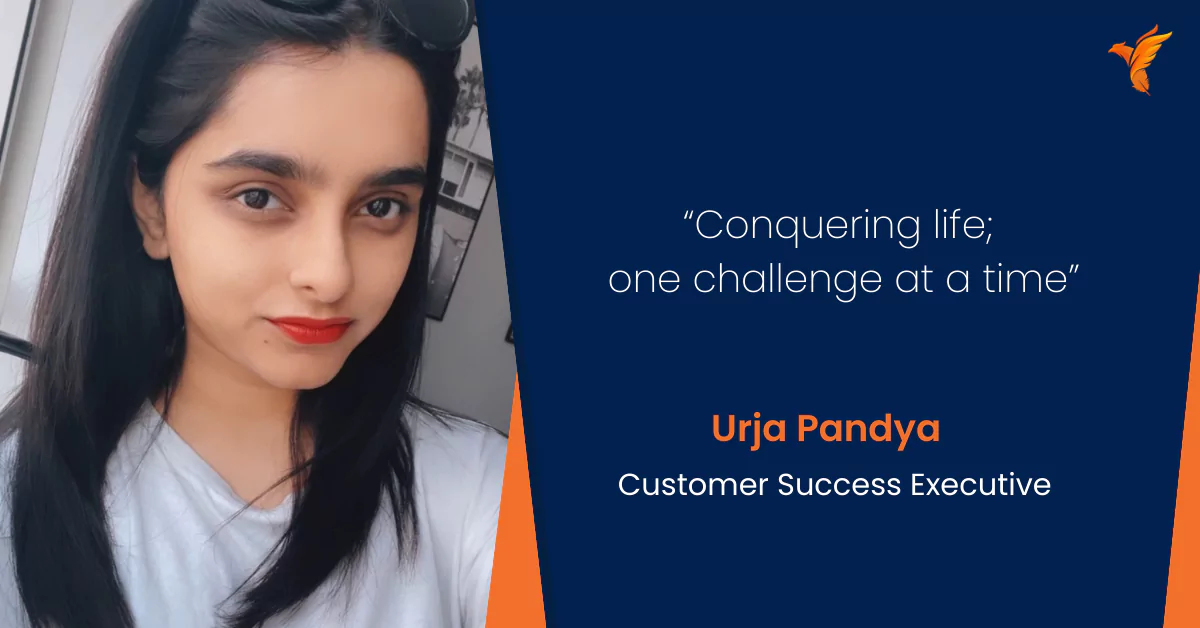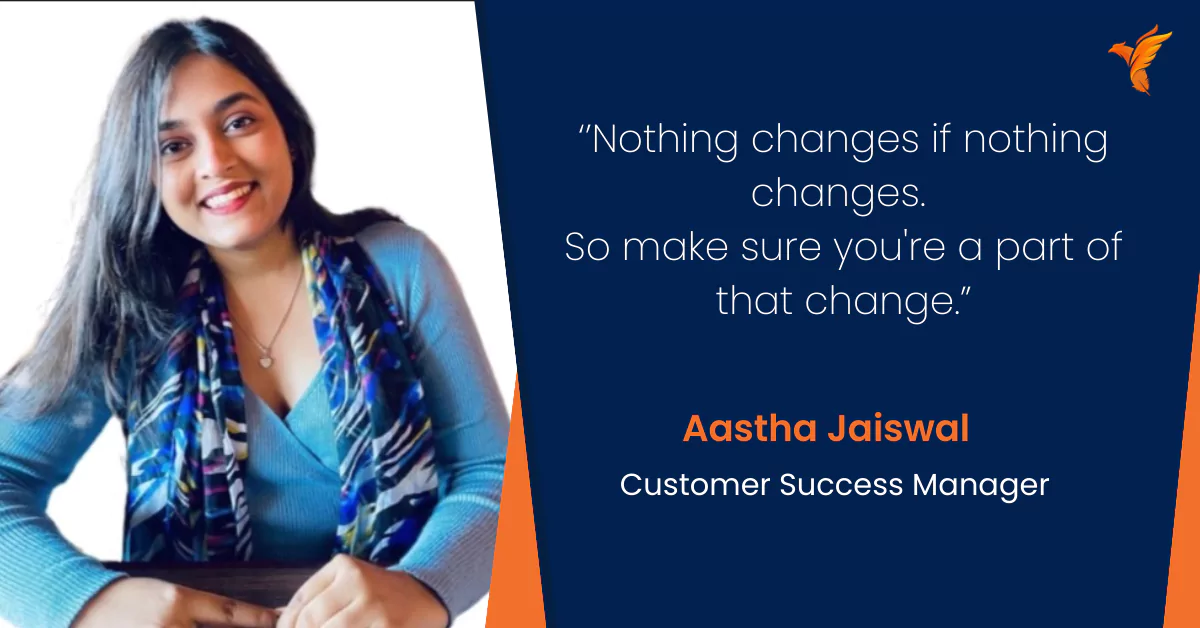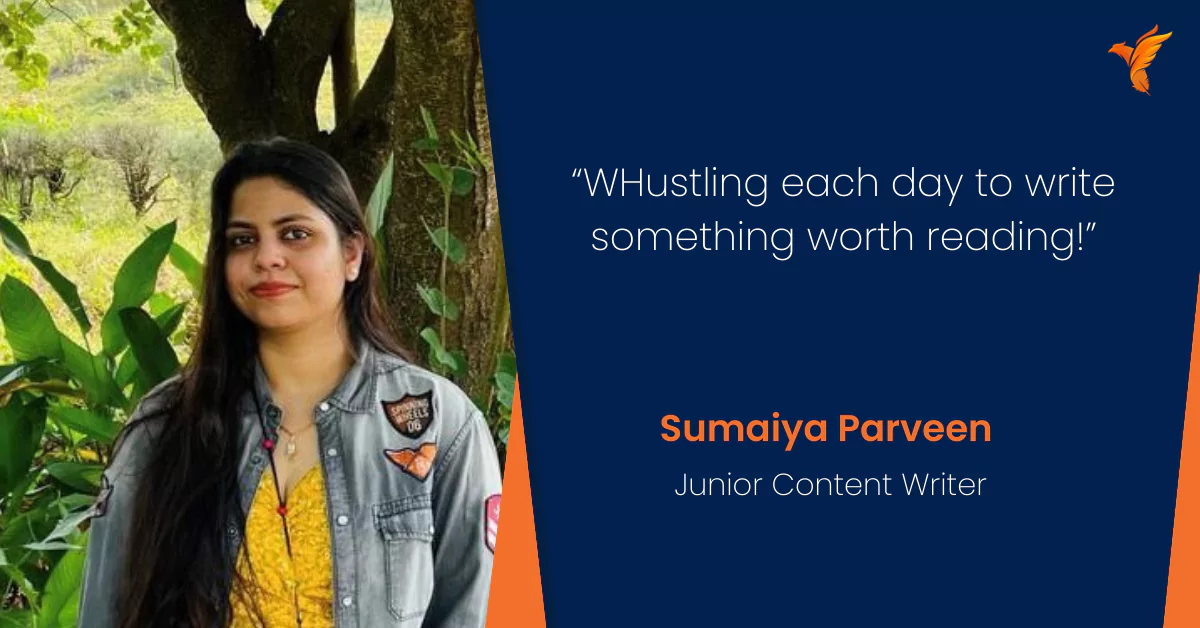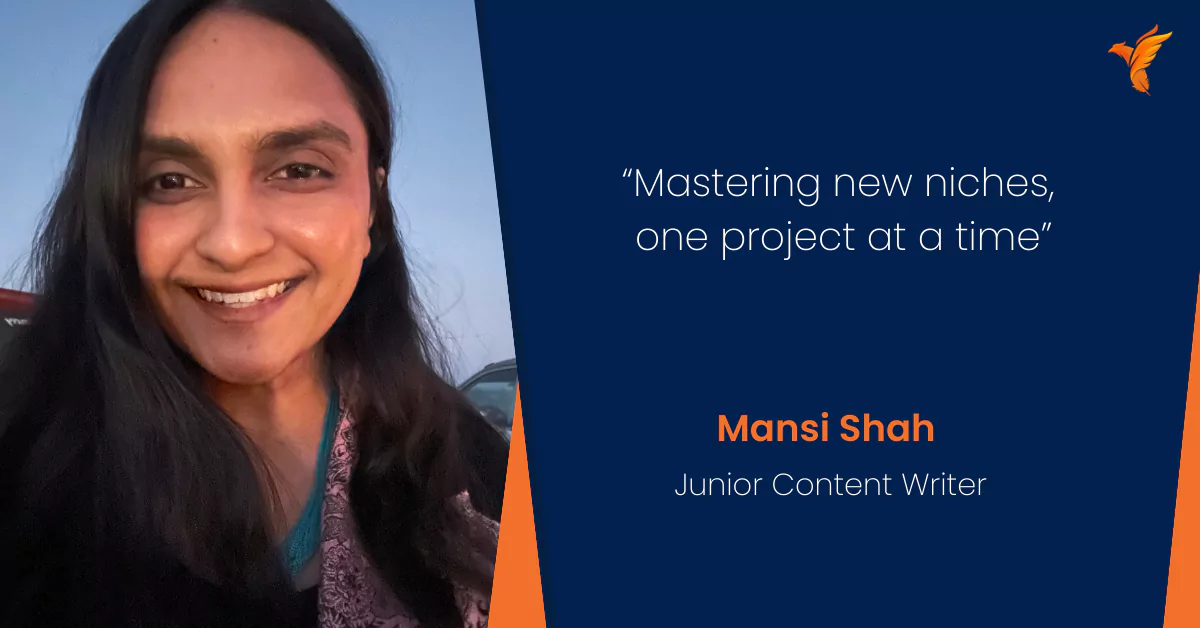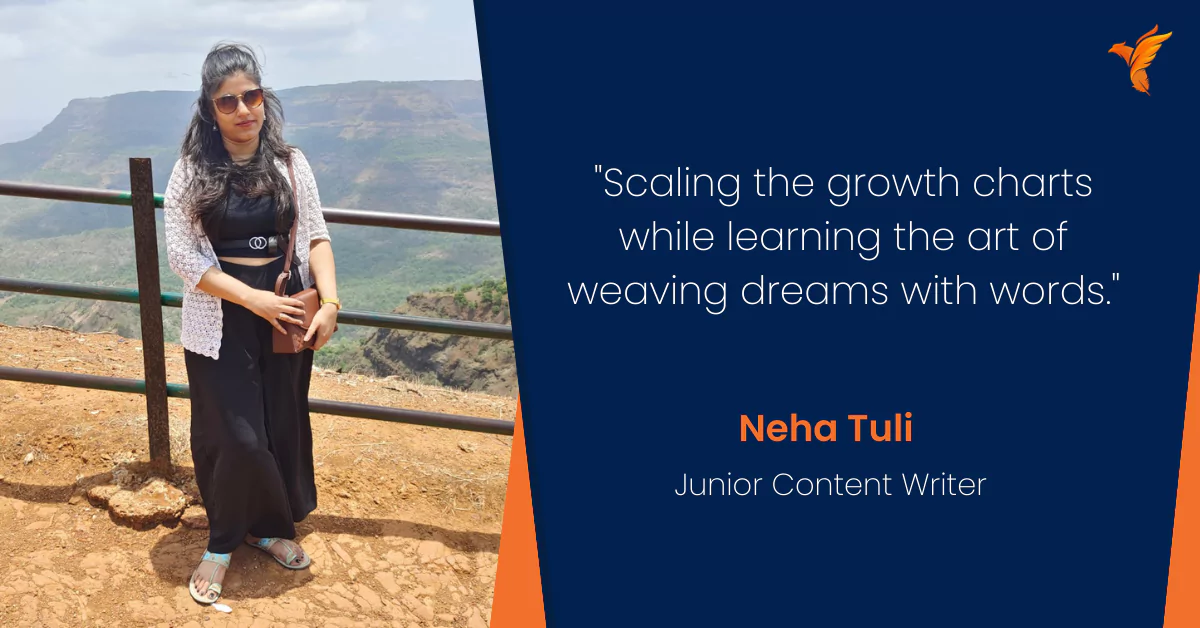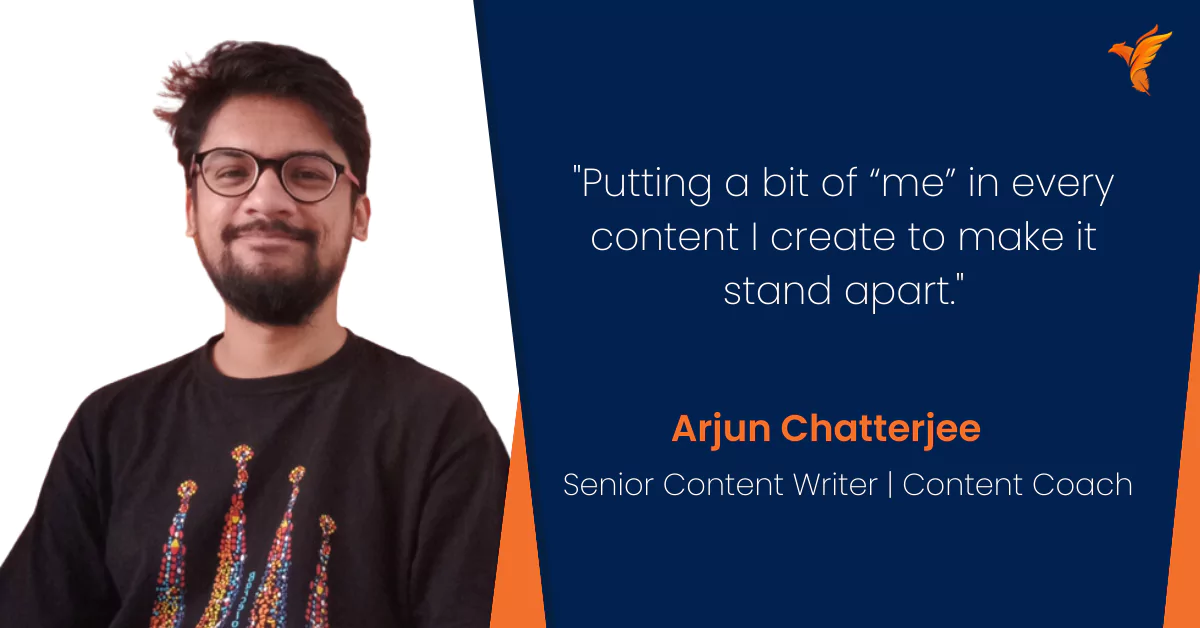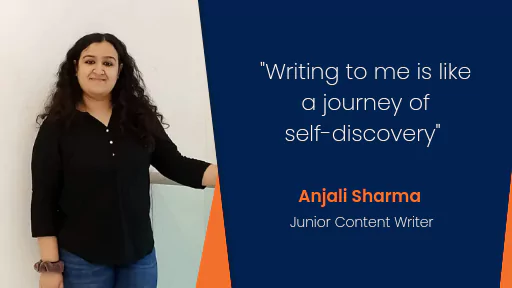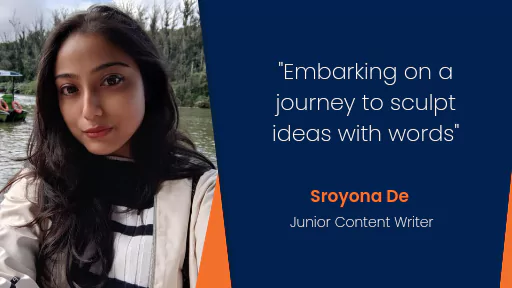Must-Know LinkedIn Algorithm Updates in 2024
Author: Team WH
Published On: 05-06-23
Last Updated on: 19-04-24
Estimated reading time: 5 minutes
With over 930 million users worldwide, LinkedIn is one of the largest business-social media platforms ever. But with so many users and constantly changing guidelines, it can be difficult to win the LinkedIn algorithm and grab your target audiences’ attention.
But can it be done? Absolutely!
In a survey by eMarketer, 40% of B2B marketers signalled LinkedIn as the most successful channel for producing top-quality leads. Not just that, marketers also observe up to 2x more conversion rates on LinkedIn. This data indicates that companies can connect with high-level executives and industry leaders through strategic marketing.
This article will walk you through what the LinkedIn algorithm is, how it works and the best practices you can follow to optimise your content.
LinkedIn Algorithm Explained
The LinkedIn algorithm is an algorithm that decides which posts to boost so that people using LinkedIn see it on their feeds. It’s catered to make every user’s feed relevant and engaging to increase their platform use and engagement with others.
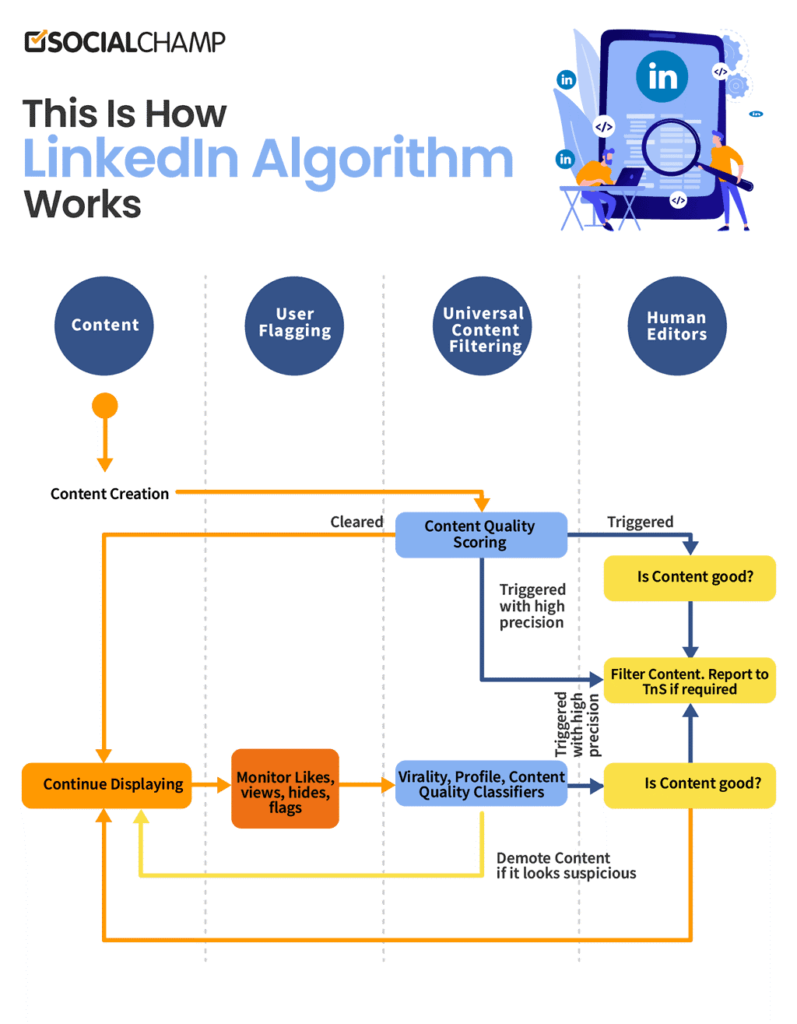
The algorithm constantly updates to show users the most useful content. Knowing the LinkedIn algorithm and how it works can take your marketing efforts to a whole new level.
But how do you keep up with the changing algorithm? We have a few tricks up our sleeves that can help you understand how the algorithm responds to different actions. Read on to learn more!
LinkedIn Algorithm: How it Works
With so many users generating so much content, it is easy for your content to get buried. And on top of that, the uncertainty of the LinkedIn algorithm update can be daunting. But there are some sure-shot ways to optimise your content to increase engagement. For that, you need to first understand how the algorithm works.
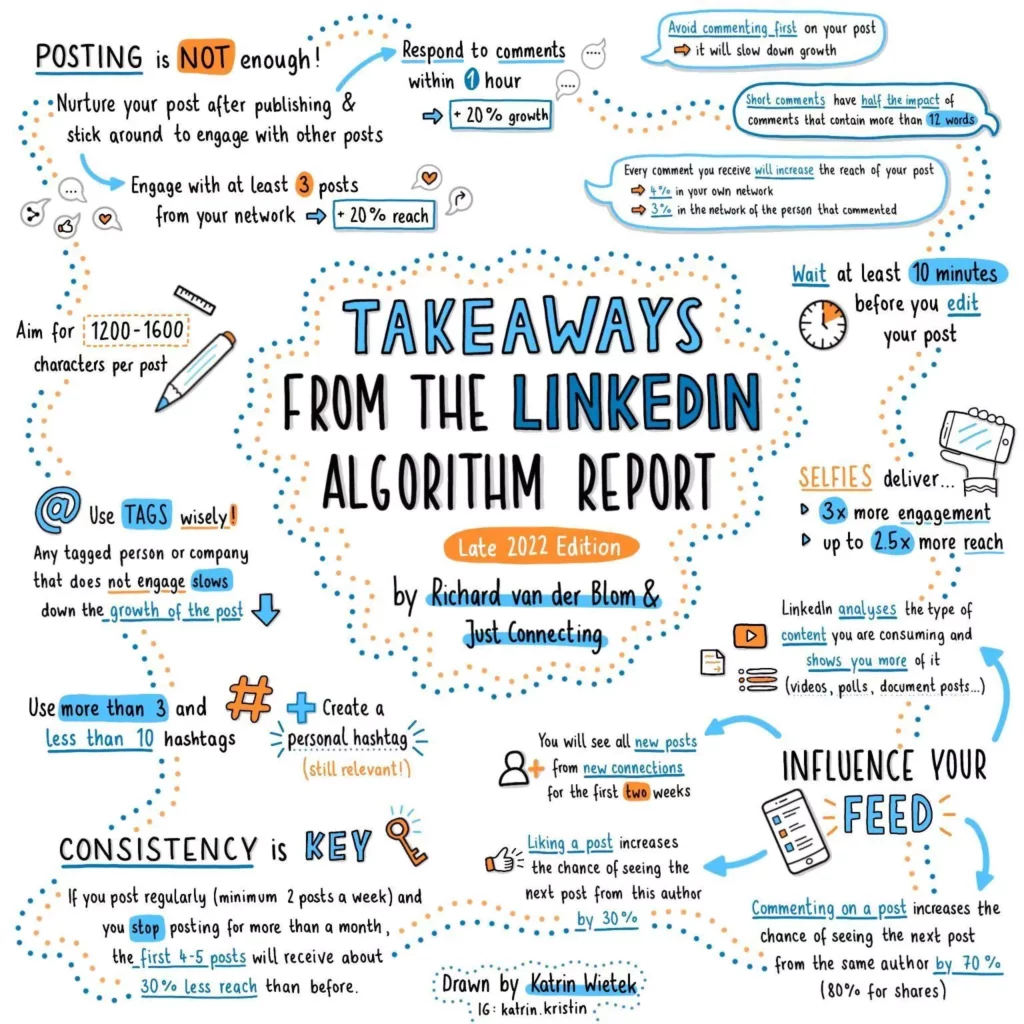
Content Quality
The basic rule of the algorithm is to bury spam content and promote content that offers high-quality insights to users. This means for every post that is generated, the algorithm divides it into categories such as:
- Spammy content: This is content that’s poorly written. Anything with bad grammar, full of outbound links, or robotic content is a no-go. Also, avoid hashtags such as #follow and #like. Posting too often, typically multiple times within 3 hours, can also lead to it being discredited.
- Low-quality content: Low-quality content isn’t necessarily spam but is irrelevant to the LinkedIn audience. These posts are often hard to read and consistently tag users who are not likely to interact or talk about repetitive or uninteresting topics.
- High-quality content: Clear or easy-to-read content that encourages interaction, incorporates optimal keywords, and uses fewer hashtags is classified as a high-quality content piece. In other words, the type of content your audience will be drawn to read and react to.
Early Engagement
After categorising your posts, the algorithm pushes your new post to some people in your network and gauges their response. If they respond enthusiastically with likes and shares and engage with comments, the algorithm pushes the post on LinkedIn to even more people.
To gain readership and engagement, you can:
- Post consistently.
- Check your time to post, publishing when your readers are most active.
- Respond to your readers to build a community.
Content Relevancy
Once your post gets some early traction, LinkedIn rechecks if it should share it with more people. It decides this by some of the following factors:
● Personal Connection
● Engagement Probability
● Interest Relevance
These trackers check the connection between you and the user who might engage with the post. Additionally, it takes note of the user’s interests and their relevance to your topic and the probability of the user engaging with your content. Therefore, posting relevant and topical content which packs a punch of information is essential.
3 Best Practices to Optimise for LinkedIn Algorithm
After understanding the algorithm and how it works, the next step is to optimise your content to enhance its reach. Here are three tips for creating high-performing LinkedIn content:
Post Consistently by Scheduling
LinkedIn offers an option for content creators to plan and schedule their posts in advance. Doing so can help you remain consistent and take away posting worries. For this, click the “schedule” icon when you create your post. Select the date and time when you want to share your content. This will give you full control over your content publishing.
Post At a Relevant Time
The engagement a post gets within its first hour of posting determines if it gets sent to a broader reader base. Posting at an optimal time when your users are online and likely to respond is a crucial factor to success. It’s important to gauge when your network is active and post accordingly.
Encourage engagement
The algorithm favours engagement, especially on posts that start a conversation. A great way to do that is with a question. Asking for The algorithm favours engagement, especially on posts that start a conversation. A great way to do that is with a question. Asking for your audiences’ opinions or thoughts on a given topic can position your brand as an industry thought leader. It also allows them to know more about your brand.
Wrapping Up
Understanding the LinkedIn algorithm can seem daunting, but with these guidelines and by knowing your niche, you can create high-quality and interactive content. Establish yourself as an industry expert and offer solid advice that sparks discussions. Be consistent with creating and publishing content on LinkedIn, and you’ll soon observe significant improvements in your reach and engagement on the platform.
People Also Ask
1. Is there any penalty for posting too often?
Yes, the algorithm will penalise your content and mark it as spam if you post too often. An alternative way to stay active on the platform is by interacting with other posts.
2. What does the golden hour rule mean?
LinkedIn, like every other social media platform, has a golden hour rule. This means that the algorithm tracks your post for a certain period of time after you post and notes its performance. If it’s good, the algorithm decides to promote the post further.
3. What should my posts on LinkedIn contain?
LinkedIn likes variety. Offer fresh perspectives and unique ideas through text posts, carousels, images, newsletters, polls, and thought leadership pieces.

